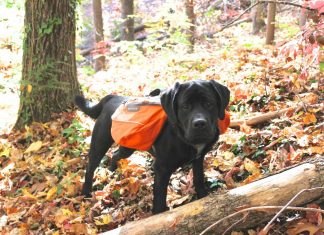 Recognizing pain in animals is a challenge at best, since they do not communicate the same way people do. There are some behaviors that are specific to certain species that can indicate pain and make it easier to for us to recognize. For example, dogs, which are predator animals, behave differently than prey animals, like rabbits and horses, which tend to hide their pain. To assess an animal’s pain level, veterinarians look at vital signs, pain scales, behavioral changes and the animal’s history.
Recognizing pain in animals is a challenge at best, since they do not communicate the same way people do. There are some behaviors that are specific to certain species that can indicate pain and make it easier to for us to recognize. For example, dogs, which are predator animals, behave differently than prey animals, like rabbits and horses, which tend to hide their pain. To assess an animal’s pain level, veterinarians look at vital signs, pain scales, behavioral changes and the animal’s history.
THE VITAL SIGNS
Heart rate, respiratory rate and blood pressure are vital signs used to assess pain, especially during surgery or after severe trauma. Vital signs are also assessed in certain situations when it comes to horses, like colic for example. However, vital sign measurements are not always enough to recognize pain from stress, anxiety, fear, or from physical responses to medical conditions like anemia. In other words, heart rate and breathing can still be normal when an animal is in pain.
BEHAVIOR CHANGES
Knowing your pet’s normal behavior is important when distinguishing pain in a specific breed or species. Behavioral changes are much more subtle, and are not always easy to recognize during routine examinations. Many animals disguise their pain, especially dogs when they greet people by wagging their tail. A cat recovering from surgery may sit quietly in the back of the cage, yet still be in pain without showing any signs of it, such as meowing, pacing or feeling agitated.
Criteria that can be used in identifying or evaluating chronic pain include:
• Lack of activity
• Decreased appetite
• Lack of self-grooming
• Weight loss
These signs may not be specific signs of pain, but rather an underlying issue that needs to be diagnosed. Changes in your pet’s attitude or interaction with family members are important for your veterinarian to know when evaluating chronic pain.
PAIN SCALES USED BY VETERINARIANS
A pain scale is a tool that veterinarians use to rate an animal’s pain level. It consists of a questionnaire that includes the following characteristics:
• Species
• Breed
• Age
• Gender
• Environment
• Rearing conditions
• Cause of pain
• Body region affected
• Duration and intensity of pain
Pain scales that consider the specific breed and typical behaviors of the species are more reliable than generic scales that rely on subjective assessment and interpretation.
HOMEOPATHIC TREATMENTS FOR PAIN
Just as with humans, ice should be the first treatment for a soft tissue injury or swelling. Homeopathic remedy arnica is incredibly helpful with muscle strain, swollen soft tissues, or bruising. Do NOT be confused with the herbal remedy arnica; while they are the same herb; they are prepared completely differently. Be sure to obtain homeopathic arnica from a health food store. For a mild injury in a dog or cat, arnica can be given orally. Place a single pellet into the mouth of the pet and make sure they swallow it. The pellets are very tiny and slightly sweet, so most pets will swallow them willingly.
There is a group of homeopathic remedies well known for their efficacy after injuries. This group includes ruta, rhus tox, bellis perennis, ledum, and hypericum. These are homeopathic remedies made from the herbs, not the herbs themselves. All can be given in the same way as arnica; however, their use is more specific, and selecting the appropriate remedy requires a little more information. Two great books to have on hand to guide you to the appropriate remedy are “Homeopathic First Aid For Animals” by Kaetheryn Walker and “Complete Guide To Natural Health For Dogs and Cats” by Dr. Richard Pitcairn, DVM and Susan Hubble Pitcairn.
Reviewed and Approved by Dr. David L. Roberts, DVM
Photo: Courtesy of OakleyOriginals via Flickr (CC by 2.0)









